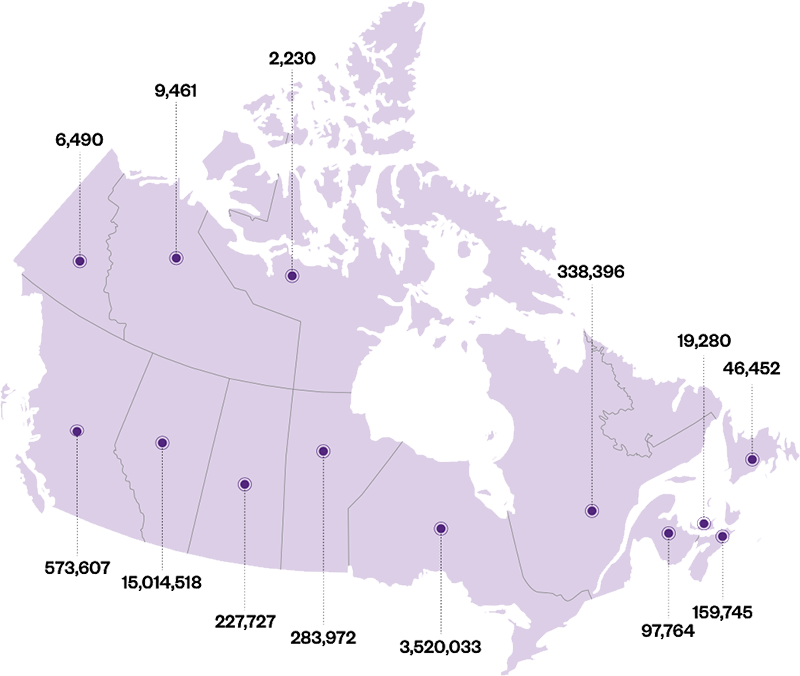
Cassy Weber
CEO, MindFuel
MindFuel, a non-profit, reaches over 1,600 Canadian communities, in French and English, and distributes to over 170 countries annually through its online learning programs.
The COVID-19 pandemic has rapidly changed how and where students receive their education, and digital learning tools have come to the forefront. MindFuel — a non-profit pioneer in STEM (science, technology, engineering, and mathematics) digital learning and youth innovation landscapes — is leading the way with world-class programming.
MindFuel has seen a rapid increase in the usage of its online resources since the onset of the pandemic, with the jump ranging from a 209% increase in Ontario and a 235% increase in Quebec to a 1,025% increase in the Northwest Territories. To meet demand while acknowledging the financial hardships caused by the pandemic, MindFuel’s paywalls were removed, making these resources accessible free of charge to all Canadian students, teachers, and parents. It has also launched a series of online supports to assist teachers and parents who were scrambling to adapt to virtual learning models.
Digital learning that engages students
Since 1990, MindFuel has brought STEM topics to life for students from kindergarten to grade 12, encouraging a deeper understanding and fostering curiosity. Its learning products are well-researched, developed by educators for educators, and are proven to deeply engage learning in STEM topics such as nanotechnology, machine learning, synthetic biology, coding, energy, and the environment.
“Digital education is a fantastic model for what we call distributed learning,” says Cassy Weber, MindFuel’s CEO. “It supports an ‘any time, any place, any pace’ model. It also supports peer-based learning and collaboration, which keep students engaged.”
The company’s extensive programming includes game-based learning, award-winning animations, augmented reality, and real-time student progress management. One of its most popular programs, Codingville, teaches self-paced coding for students and teachers and is on track to reach 124,000 students and 4,625 teachers by March 2021. “Quality of education is directly tied to the level of learning engagement,” says Weber. “When you have students who are highly engaged, their motivation and sense of curiosity are also high. That’s a winning trifecta.”
Diversity and inclusion-based resources for underrepresented students
MindFuel is committed to supporting demographics that are frequently underrepresented in STEM. “In the context of STEM in the classroom, ‘underrepresented’ is in fact usually the majority,” notes Weber. “That includes girls, Indigenous students, newcomers, students who have English as an additional language, and remote or rural populations. We’d leave a lot of students behind if we didn’t support their diversity, so this is an area that we focus on.”
MindFuel develops its programs with these demographics in mind. “We know that kids learn differently, and in supporting these aspects of diversity, we support the student’s learning journey of making meaning of the world and the scientific phenomena around them,” says Weber.
Each of MindFuel’s resources is focus-tested in the classroom, and thoughtful elements of diversity and inclusion are woven into the programs’ designs. From Girls in STEM to Indigenous Ways of Knowing, many of MindFuel’s learning resources are designed to appeal to diverse student groups and to support different learning styles.
In the context of STEM in the classroom, ‘underrepresented’ is in fact usually the majority.
Cassy Weber, MindFuel CEO
Inspiring Canadian youth to develop an innovation mindset
Canada’s innovation sector needs more homegrown talent — according to the World Intellectual Property Organization, we’re 17th on the global innovation index.
“Our Canada Tech Futures — Youth Innovation Gateway program is a way to invest in Canada’s economy and to create highly-qualified people for future positions in STEM,” says Weber. “Since inception, we’ve invested over $100 million to support youth innovation in Canada.”
In the program, student teams participate in transformative learning workshops, connecting with mentors and experts, and developing solutions to real-world problems using artificial intelligence, robotics, nanotechnology, synthetic biology, and other emerging technologies.
“We’ve completed a five-year pilot in Alberta, where we supported 4,300 students, and we’re excited to expand the program into the rest of Canada,” says Weber. “Our next goal is 320,000.”
Fostering innovation-minded youth is critical to driving Canada’s innovation index higher. “When you start looking at innovation outputs, that’s when you start seeing significant increases in skilled and knowledgeable employees and patents and trademarks, and these all translate into increasing GDP,” says Weber.

Delivering STEM Learning Across Canada
More than 17 million Canadians have participated in MindFuel since 1990, from youth exploring STEM to educators helping shape our next generations.
20 M STEM experiences since November 2011.
86% of students stated, “I can see myself working in science.”
89% of students stated, “I was engaged in learning about science.”
| Agriculture, biodiversity, energy and alternative energy, and environmental and water science | 7.6 M |
| Design thinking, innovation, and entrepreneurialism | 2.7 M |
| STEM knowledge foundations | 6.3 M |
| Computational thinking, robotics, information modelling, machine learning, and artificial intelligence | 1.0 M |
| Health | 976 K |
| Synthetic biology and nanotechnology | 380 K |
| Space and astronomy | 353 K |
| Indigenous Ways of Knowing | 570 K |
| STEM Career Showcase and Girls in STEM | 423 K |




